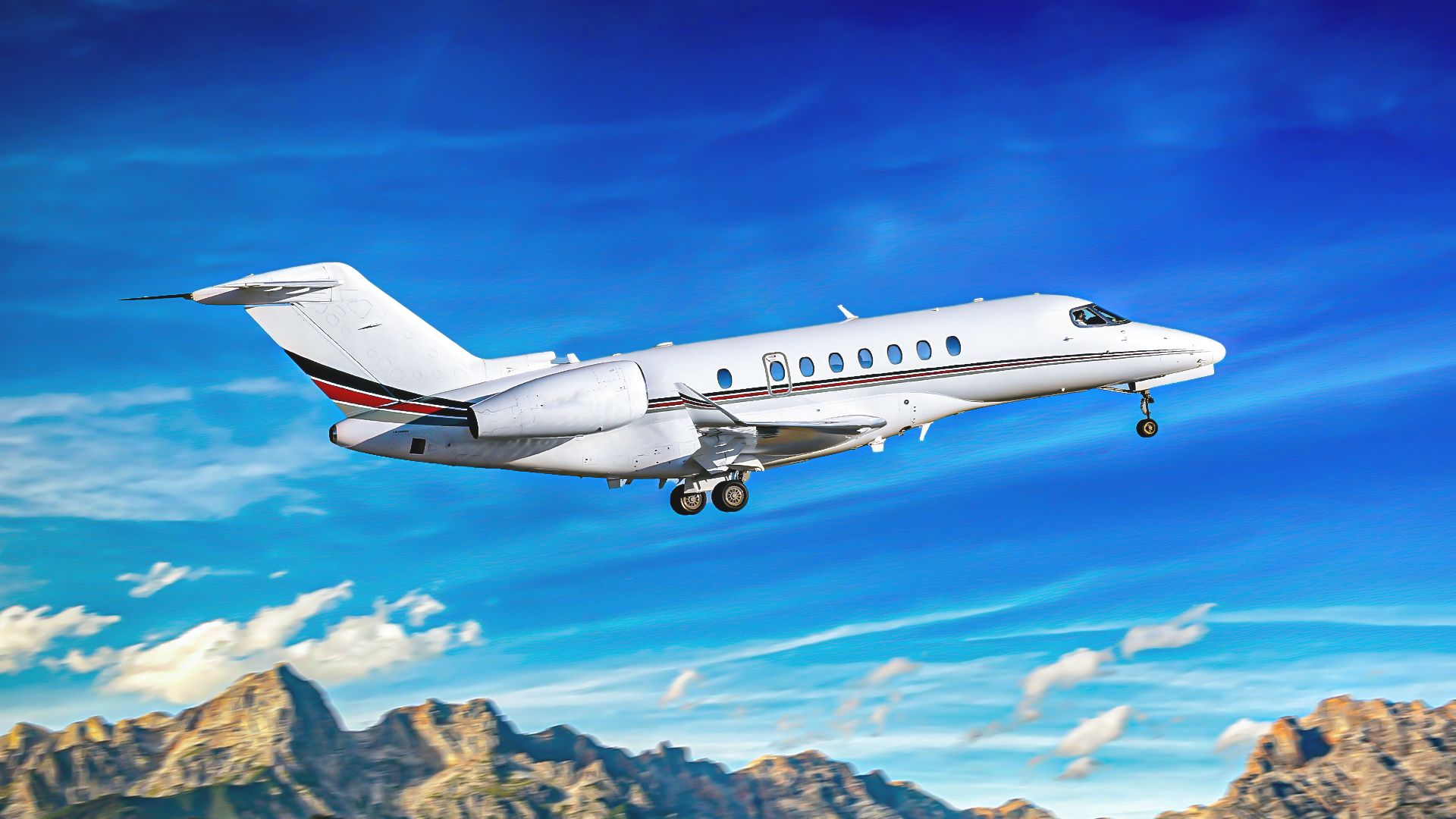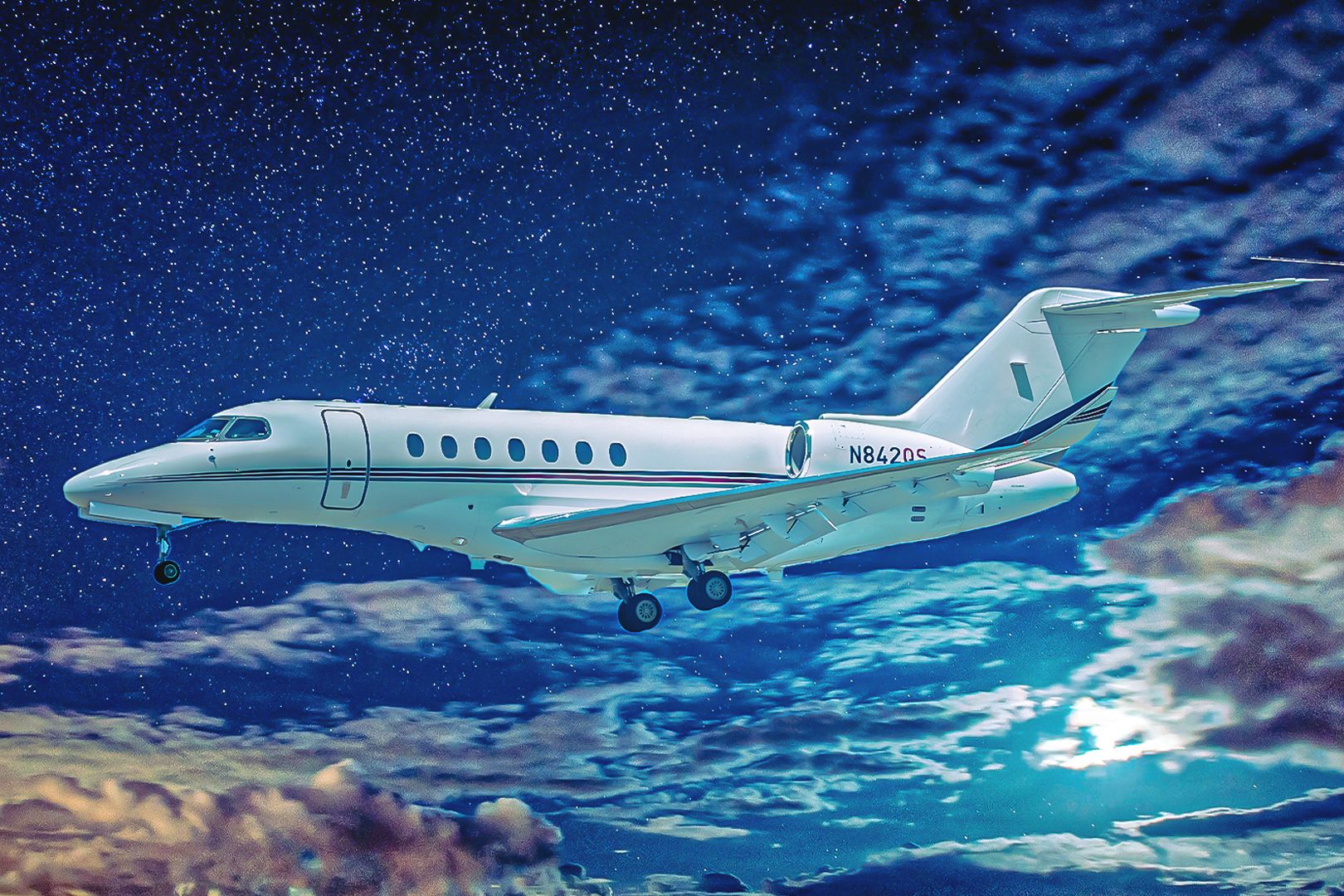


The Cessna Citation Longitude is the largest business jet produced by Cessna, now part of Textron Aviation, and is part of the Citation Jet family. It was designed as a cost-effective private jet capable of transatlantic travel. The super-midsize jet has a comfortable cabin and advanced engineering and is known for reliability and efficiency. How far can the Cessna Citation Longitude travel? Let’s take a look.
The aircraft is powered by Honeywell HTF7700L turbofan engines, which produce 7,665 pounds of thrust. They allow for a maximum cruise speed of 483 knots or 895 kilometers per hour. With an average of four passengers, the range is 3,500 nautical miles or 6,482 kilometers, with a ceiling of up to 45,000 feet at Mach 0.84.
The maximum range is subject to headwinds, high altitude, hot temperatures, and full passenger capacity. This range approximates a flight time of 7 hours and 45 minutes and a high-speed cruise of 547 miles per hour. The Citation Longitude offers excellent performance at both high elevations and short runways.
The range of the Citation Longitude allows for travel between cities such as:
Photo: BAHADIR ARAL AVCI | Shutterstock
A little history Cessna’s Citation Longitude was first announced in 2012 but didn’t take its first flight until October 8, 2016. The first three Longitude produced were used to develop the avionics and systems further and collect flight sim data. Later, two more of the aircraft were added to the test program. It was FAA certified in September 2019, after 6,000 flight hours, 11,000 test points and a 57,000 kilometer world tour. It was the follow-up project from Cessna’s canceled Citation Columbus program. The Citation Longitude is still in production today.
The aircraft takes the aluminum airframe of the previous Citation Latitude with an extra seat row added. It has a -28-degree swept wing with winglets and a T-tail. The Citation Longitude can seat up to 12 passengers in the stand-up cabin but typically seats eight passengers in a double club configuration with reclining seats. It has the best legroom in its class and pop-up tables for working or dining.
It has the quietest cabin in its class and has a baggage compartment that can hold up to 112 cubic feet of luggage, approximately 16 average-sized bags. There is a refreshment center and an enclosed lavatory. The Citation Longitude has 17 large windows and internet and Bluetooth capabilities. The aircraft’s cabin management system is touchscreen-based and wireless and can be controlled by the passenger.
The cockpit is ergonomically designed, and the avionics suite is the Garmin G5000. The Enhanced Flight Vision System (EFVS) increases pilots’ situational awareness and improves safety, as does the Head-Up Display (HUD). It has a fully integrated autothrottle, intuitive controls, and LINXUS software, an advanced onboard diagnostic system.
Photo: BAHADIR ARAL AVCI | Shutterstock
General characteristics
Performance
Avionics

Related
The prices of Citation family jets are at par with the competition.
Due to its low operating costs, the Citation Longitude is popular with charter operators or fractional operators like NetJets and private owners. In fact, Cessna says that over five years of ownership, you can save 18.7% of overall operating costs compared to similar-sized aircraft types. It has a general operating cost of $2,963 per hour.
It’s no wonder NetJets purchased 175 Citation Longitude at $26 million per aircraft in 2018. Their first Citation Longitude was delivered to them on December 31, 2019. NetJets also ordered 150 Citation Hemisphere, which was developed from the Citation Longitude. The Citation Hemisphere cost $35 million each. The 100th Citation Longitude was delivered in May 2023, and at that time, it was fully equipped. The aircraft’s purchase price was $29.995 million.